Effective Strategies for Eradicating Poison Ivy and Oak


Intro
Poison ivy and poison oak are notorious for their ability to cause skin irritation. Understanding these plants is crucial for effective eradication. This article elucidates strategies to eliminate these harmful varieties, addressing both natural and chemical methods. By grasping their growth habits, one can develop a tailored approach for removal.
The impact of these plants extends beyond personal discomfort; their presence can deter individuals from enjoying outdoor spaces. Homeowners and gardening enthusiasts benefit from insights on best practices. The aim here is to offer comprehensive guidance, ensuring that spaces remain free from irritants while safeguarding the surrounding ecosystem.
Understanding Poison Ivy and Poison Oak
Understanding poison ivy and poison oak is crucial for anyone who spends time outdoors, especially homeowners and gardening enthusiasts. These plants can cause severe skin irritation and allergic reactions. Knowing their characteristics and habits can help mitigate potential health risks and enable one to manage their landscaping effectively. Understanding these plants aids in prevention and control, ensuring good stewardship of one’s garden space.
The Biology of Poison Ivy
Poison ivy (Toxicodendron radicans) is a perennial plant native to North America. It consists of a complex root system that allows it to thrive in various soil types and conditions. The plant can grow as a vine, shrub, or ground cover. Its leaves typically appear in groups of three, which is a distinctive feature that helps with identification. The sap contains an oil called urushiol, which is the primary cause of allergic reactions in sensitive individuals. Understanding its life cycle is important. It can germinate in spring and grow rapidly in favorable conditions, making timely intervention essential for effective control.
The Biology of Poison Oak
Poison oak (Toxicodendron diversilobum), similarly to poison ivy, is known for its irritating oil, urushiol. While it's primarily found in the western parts of the United States, its biology shares many similarities with poison ivy. It can grow as a shrub or vine and has leaves that are divided into three to seven lobes. Poison oak typically flourishes in sunny, well-drained locations and can spread quickly when disturbed. Understanding its growth patterns helps in developing strategies for removal and prevention.
Identifying the Plants
Accurate identification of poison ivy and poison oak is crucial in control efforts. Both plants can present challenges as they can be mistaken for harmless vegetation. Key features to look for include:
- Leaf Structure: Poison ivy has three leaflets, while poison oak may have three to seven lobes.
- Stem Appearance: Poison ivy often has a woody stem when mature and can climb on structures, whilst poison oak has a bushier growth.
- Seasonal Changes: The color of the leaves can change with the seasons, turning vibrant reds and yellows in autumn, which may help in recognizing them before they cause contact.
Recognizing these features can significantly reduce the risk of unintentional exposure. To assist in identification, consider using resources such as Wikipedia.
Why Control is Necessary
Effective management of poison ivy and poison oak is crucial for several reasons. These plants are not only a nuisance but also pose significant health risks. Moreover, they can disrupt a garden's ecosystem, leading to detrimental effects on plant diversity and growth. Understanding the necessity of control measures helps in developing informed strategies to manage such irritating flora.
Health Risks Associated with Exposure
Exposure to poison ivy and poison oak can lead to severe allergic reactions in many individuals. These plants contain a resin called urushiol, which causes skin rashes, itchiness, and swelling. Reactions might vary greatly among individuals; some may only experience minor itching, while others could have life-threatening responses. It’s important to note that urushiol can linger on clothing, tools, and even pets, leading to further exposure if not properly managed.
- Symptoms of Exposure:
- Redness
- Blistering
- Swelling
- Itching
Prompt recognition and treatment of these symptoms are vital. In some cases, exposure requiring medical attention can lead to complications such as secondary infections. Therefore, controlling the growth of poison ivy and poison oak aids not only in maintaining safety for family members but also ensures a healthier outdoor environment.
Impact on the Garden Ecosystem
Poison ivy and poison oak can significantly disrupt the garden ecosystem. They often crowd out native plants, leading to a decrease in biodiversity. This reduction affects pollinators and other beneficial insects dependent on a diverse plant community for food and habitat.
With invasive growth habits, these plants compete for sunlight, water, and nutrients, potentially stunting the growth of desired garden plants. This can lead to a less vibrant garden and reduced yield for those growing edible plants.
The overall health of your garden can suffer if these plants are not controlled. Actions taken to manage these species accordingly can promote a balanced ecosystem conducive to healthy plant growth and sustainability.
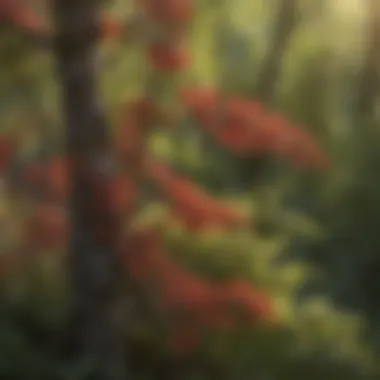
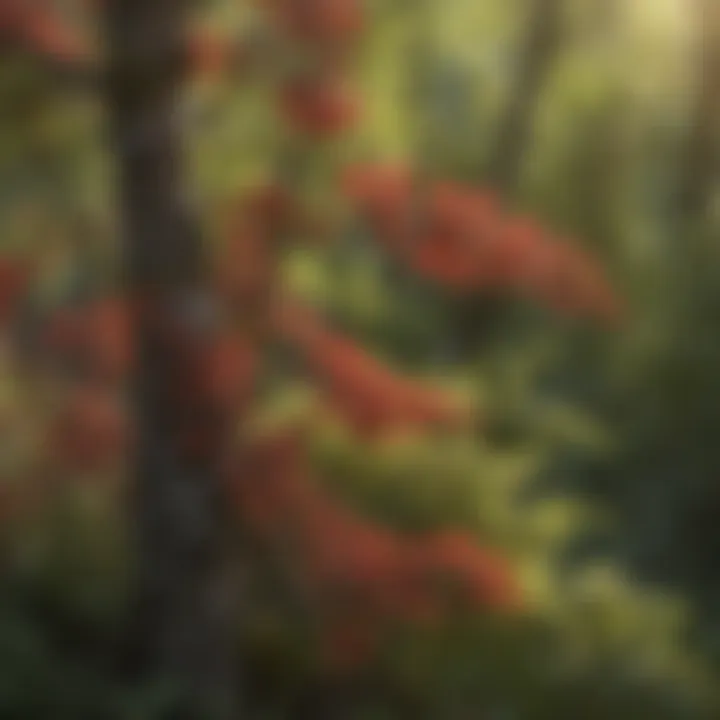
Regular monitoring and control of poison ivy and poison oak is not just a practical concern, but a necessary action to uphold environmental health.
Chemical Solutions for Eradication
Chemical solutions play a crucial role in the effective eradication of poison ivy and poison oak. These plants are notorious for their resilience and ability to thrive in various environments. Therefore, using chemical means can offer a systematic approach to eliminate them. Herbicides specifically formulated to target these species are essential tools for homeowners and gardening enthusiasts. They provide immediate results, which can be vital when trying to maintain a safe and enjoyable outdoor space.
In addition to effectiveness, there are several other benefits associated with chemical solutions. One major advantage is the speed of action. Chemical herbicides can penetrate the plant’s system, often leading to quicker death compared to natural remedies. This can save gardeners valuable time and effort, particularly when dealing with large infestations. However, caution must be exercised to ensure that the chemicals do not harm desirable plants or the surrounding ecosystem.
Physical removal and non-chemical methods may not always yield satisfactory results, especially with established root systems. Hence, integrating chemical solutions into the eradication plan is often necessary. However, it is also important for individuals to understand the considerations involved in using such products to mitigate any potential risks to health or the environment.
Herbicides: An Overview
Herbicides are chemicals designed to control unwanted plants. They can either be non-selective or selective, targeting specific unwanted plants while leaving desirable vegetation unharmed. For poison ivy and poison oak, non-selective herbicides are effective, as these plants can often outcompete neighboring flora.
Common herbicides contain ingredients such as glyphosate or triclopyr. Glyphosate is popular for being broad-spectrum, while triclopyr is effective against woody plants. It is important for users to read the labels carefully and follow the manufacturer’s instructions to maximize effectiveness and ensure safety.
Applying Glyphosate
Glyphosate is one of the most common choices for homeowners looking to eradicate poison ivy and poison oak. Widely known for its effectiveness, glyphosate operates by interfering with the plant's growth processes. Effective application requires timing and technique. It is ideal to apply glyphosate in warm weather when the plants are actively growing.
The best method is to directly spray the leaves of the plants to ensure maximum absorption. It can also be applied without diluting, but users should be cautious not to overspray onto surrounding plants.
Selective Herbicides for Specific Applications
Selective herbicides are vital for targeted applications. Using these can minimize the risk of harming desirable plants while effectively controlling poison ivy and poison oak. Some selective herbicides are designed to kill only certain types of plants and can deliver precise results without endangering the garden's overall health.
For instance, triclopyr can be used in situations where poison ivy is rooted among other plants. Reading the herbicide's label before application is vital for understanding how to utilize it properly.
Safety Considerations When Using Chemicals
Safety should always be a priority when dealing with chemicals. Proper protective equipment is essential to safeguard the user against harmful effects. Wearing gloves, long sleeves, and eye protection is recommended during application. Furthermore, it is important to avoid any wind, as airborne particles can drift to unintended areas, affecting non-target plants or even causing irritation to skin.
After application, washed hands thoroughly, and any remaining herbicide should be disposed of safely. Understanding local regulations regarding chemical use is also important. Following these guidelines not only protects the gardener but also helps maintain the health of nearby ecosystems.
Effective management of poison ivy and poison oak necessitates a thorough understanding of chemical solutions and their implications.
Natural Approaches to Control
In the pursuit of managing poison ivy and poison oak, natural approaches present an appealing alternative to chemically intensive solutions. These methods often utilize readily available household items, reducing the need for commercial herbicides that may pose risks to surrounding flora and fauna. The benefits of adopting natural strategies are multifaceted; they are generally safer for the environment, lower in cost, and can be effective in specific situations. Furthermore, these methods often align with a more sustainable gardening ethos, appealing to those who prioritize eco-friendliness in their land management practices.
Vinegar Solutions
Using vinegar as a weed killer exploits its acetic acid properties, which can effectively desiccate the leaves of poison ivy and poison oak. Applied in a concentrated form, vinegar is most effective on sunny, dry days. This method works best when the temperature is above 75°F, as the heat enhances its potency. To utilize this solution:
- Select a vinegar with at least 10% acetic acid concentration for stronger effectiveness.
- Spray the affected plants directly, ensuring thorough wetting of the leaves and stems.
- Repeat applications may be necessary for complete eradication, especially if the plants are particularly hardy.
One consideration is that while vinegar can effectively kill the plants, it may also harm nearby garden plants, so careful application is crucial.
Boiling Water Method
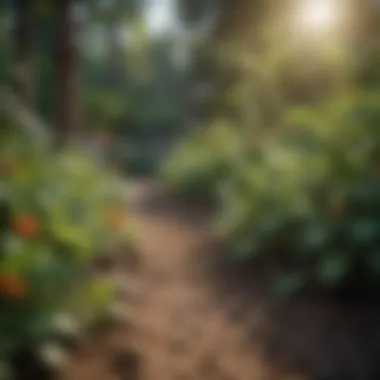
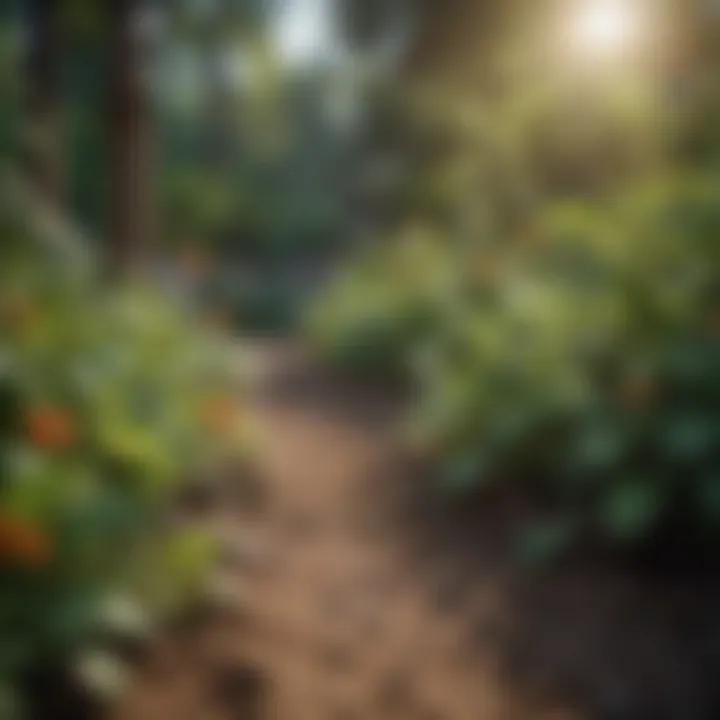
Boiling water serves as a straightforward yet effective method for eliminating poison ivy and poison oak. By simply pouring boiling water over the plants, the intense heat disrupts the cells within the plant structure, leading to quick wilting or death. This method has certain advantages:
- It is entirely chemical-free and poses no risk to the environment.
- It is especially useful for smaller patches or single plants that may be easy to target.
- Boiling water can also invigorate nearby soil, thus deterring future growth of the plants as the high temperature can sterilize weeds.
However, caution must be exercised to avoid contact with desired plants, as the water can negatively affect them too.
Salt Applications
Salt can be utilized as a herbicide due to its ability to penetrate the plant tissue and draw moisture away from the leaves. To use this method:
- Mix a solution of salt and water (a ratio of 3:1 salt to water is often effective).
- Apply the mixture directly to the leaves of the plants.
While effective, salt can lead to soil degradation over time and may affect the health of the surrounding soil and plants. Careful application is recommended, as it should be used strictly on target areas.
Rubbing Alcohol as a Control Option
Rubbing alcohol, or isopropyl alcohol, can also be an efficient method for tackling poison ivy and poison oak. When applied directly to the leaves, rubbing alcohol causes the plant to dehydrate and die. This method is particularly advantageous because:
- It is a common household product that is readily available.
- It acts quickly, often causing visible changes in the plants within a day or two of application.
- The efficiency of rubbing alcohol is enhanced in combination with other natural remedies.
To ensure effective use, dilute rubbing alcohol in water and spray the mixture on the leaves in the late afternoon when sunlight is waning, as this minimizes potential evaporation.
By employing these natural approaches, homeowners can effectively manage the spread of poison ivy and poison oak. These methods, while effective, require monitoring and repeated applications to ensure full eradication. Each approach carries its own considerations, but with appropriate care and execution, natural strategies can yield favorable results.
Best Practices for Eradicating These Plants
Eradicating poison ivy and poison oak is not simply an act of removal; it necessitates best practices to truly ensure the success and sustainability of the eradication effort. Understanding how to approach this task is crucial for every gardener and homeowner, particularly those who wish to maintain their outdoor spaces without the constant threat of these irritating plants. Implementing effective strategies can yield long-lasting results and contribute to overall garden health. Key elements in this practice include the timing and conditions of application, the necessity of repeated efforts, and strategies for preventing regrowth.
Timing and Conditions for Application
Timing plays a vital role in the successful eradication of poison ivy and poison oak. The best periods for applying both chemical and natural solutions typically align with the active growth phases of these plants, which usually occurs during the late spring and early summer months. During these times, the plants are more susceptible to treatment. Applying herbicides too early or too late can diminish their effectiveness.
Furthermore, environmental conditions also need to be taken into account. Dry weather helps ensure that the treatment does not wash away and that the product is absorbed effectively by the plant. Ideally, aim for a period when no rain is forecasted for at least 24 hours post-application. Additionally, calm weather is beneficial; windy conditions can cause drift, leading to unintended damage to nearby flora.
Repeated Applications for Maximum Effectiveness
One treatment will rarely suffice when dealing with stubborn species like poison ivy and poison oak. Repeated applications of herbicides or your chosen natural solution can significantly increase the chances of successful eradication. This is because these plants may survive initial treatments, especially if they have a well-established root system.
Generally, it is recommended to plan for at least two to three applications during the growing season. Observing the plants and waiting until they visibly respond—such as wilting or browning—can guide further treatment. Each application should focus on the most vigorous parts of the plant to maximize damage.
Preventing Regrowth
Once you have successfully eradicated poison ivy and poison oak, preventing their regrowth is paramount. This involves creating an environment that inhibits their ability to thrive. Here are several strategies one can implement:
- Mulching: Apply a thick layer of mulch in the affected area. This can suffocate any potential regrowth by blocking sunlight and restricting access to nutrients.
- Plant Competition: Encouraging robust native plants can outcompete poison ivy and poison oak, thereby limiting their growth potential. Select ground covers or perennial species that are hardy and prefer the same environment.
- Regular Monitoring: Regularly check the area for any signs of resurgence. Early detection can lead to quicker interventions, reducing the likelihood of extensive regrowth.
- Soil Management: Understanding and maintaining healthy soil conditions can prevent toxicity build-up from previous herbicides that might favor regrowth of these plants. A healthy ecosystem is more resilient.
"Successful eradication of poison ivy and poison oak requires diligence, patience, and well-timed actions."
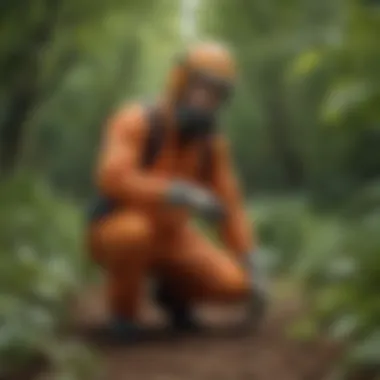
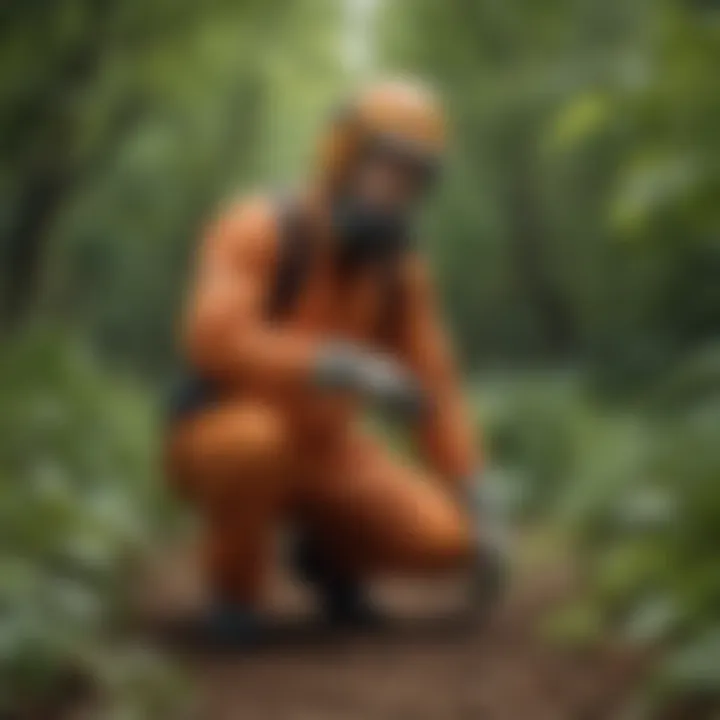
Following these best practices will yield effective results in your battle against poison ivy and poison oak. Remember, the ultimate goal is not merely to remove these plants, but to create a healthy, sustainable outdoor environment.
Physical Removal Techniques
Effective physical removal techniques are a crucial facet of eradicating poison ivy and poison oak. These strategies not only help to remove the plants directly but also engage the gardener fully in the process. Manual removal can be highly effective, especially for small infestations or when trying to prevent the plants from spreading further. It is important, though, to handle this method with care to minimize the risk of skin exposure and to ensure that the plants do not grow back.
When to Remove Plants Manually
Timing is essential for the successful manual removal of poison ivy and poison oak. The best time to tackle these plants is during their active growth phase, typically in late spring or early summer. The leaves are full and easier to identify, which helps avoid confusion with similar-looking plants. Removing them before they flower or seed is also beneficial, as this reduces the chance of new plants sprouting from seeds. Additionally, it's wise to choose a day with mild weather, avoiding wet conditions that might make the ground muddy and difficult to work in.
Tools for Effective Manual Removal
Having the right tools is vital for reducing effort and increasing effectiveness in physical removal. Here are some recommended tools:
- Garden Gloves: A good pair of thick, long gloves will help protect against skin exposure to the irritants in the plants.
- Shovel or Spade: A sharp shovel can help with digging up the plants, ensuring you get as much of the root system as possible.
- Pruning Shears: For larger plants, pruning shears can make it easier to cut the stems, making them simpler to handle.
- Trash Bags: Heavy-duty trash bags are needed to safely collect and transport the plants for disposal.
Using these tools properly can significantly enhance the removal process and reduce potential hazards.
Disposing of Poison Ivy and Oak Safely
Disposal is a critical step after manual removal. It is essential to remember that burning poison ivy or oak is highly dangerous, as the smoke can carry the plant's toxins, leading to respiratory issues. Instead, the plants should be double-bagged in heavy-duty trash bags. Label the bags clearly to avoid accidental exposure for anyone who might handle them in the future. Many regions have specific guidelines for the disposal of hazardous waste; consult local resources for the best practices.
In summary, engaging in physical removal requires careful planning. By timing the removal correctly, employing the right tools, and disposing of waste safely, you can effectively manage these troublesome plants.
Aftercare and Monitoring
After successfully eradicating poison ivy and poison oak, the importance of aftercare and monitoring cannot be overstated. These practices play a critical role in ensuring that your efforts are not in vain and that your garden remains a safe space. Regular checks and maintenance can help mitigate the risk of resurgence and provide insights about the effectiveness of your chosen methods.
Assessing the Area Post-Eradication
Once the plants have been removed or treated, it is essential to assess the area. Begin by inspecting the site for any signs of the plants' regrowth. This should be done a few weeks after treatment. Look for any new leaves or ground cover that resembles the original plants. Early detection is key in managing any potential resurgence.
- Check the soil: If you used chemical solutions, understand how they interact with the soil. It might be necessary to test the soil to ensure no residues remain that could harm other plants.
- Observe surrounding plants: Sometimes, desirable plants can be mistakenly affected by chemical solutions. Checking on the health of your surrounding flora is crucial for maintaining a balanced ecosystem.
Monitoring for Potential Resurgence
Continued vigilance is necessary for the long-term success of poison ivy and poison oak eradication. Persistent monitoring can help you catch any signs of these plants before they spread.
Here are some strategies for effective monitoring:
- Set a schedule: Regularly check the eradicated area. A bi-weekly inspection for the first few months can help catch any new growth early.
- Maintain records: Keep a simple log of your observations. Document when you last checked and what you found. This can provide useful insights over time.
- Engage with local communities: Online platforms like reddit.com can help you connect with others who might have experience in dealing with these plants. Sharing tips and experiences can be beneficial.
Remember, while successful eradication is quite the accomplishment, keeping the area healthy and free from poison ivy and poison oak requires diligence and consistent care.
"The persistence of monitoring can lead to a safe and enjoyable garden space, free from the burdens of irritant plants."
The End
The final segment of the article emphasizes the significance of effectively addressing the presence of poison ivy and poison oak. Homeowners and gardening enthusiasts alike must recognize that these plants pose more than just a nuisance; they bring potential health risks and disrupt the harmonious balance of their gardens. Proper control methods require understanding, determination, and due diligence. By implementing the strategies outlined previously, individuals can forge a safer environment not only for themselves but also for visitors and pets.
Effective eradication of poison ivy and poison oak involves a holistic approach that takes into account the various methods available, both chemical and natural. Each strategy discussed in the article holds its unique advantages, whether it be glyphosate for immediate relief or natural vinegar solutions for those leaning towards eco-friendly practices. Combining these approaches, when appropriate, can maximize effectiveness.
Monitoring areas for resurgence post-removal is crucial to maintaining long-term success. This proactive stance ensures potential regrowth does not catch homeowners off-guard. Communities benefit when individuals are knowledgeable and diligent in managing these plants, as it promotes safe outdoor experiences for everyone.
"Prevention and awareness are the first lines of defense against the challenges posed by poison ivy and poison oak."



